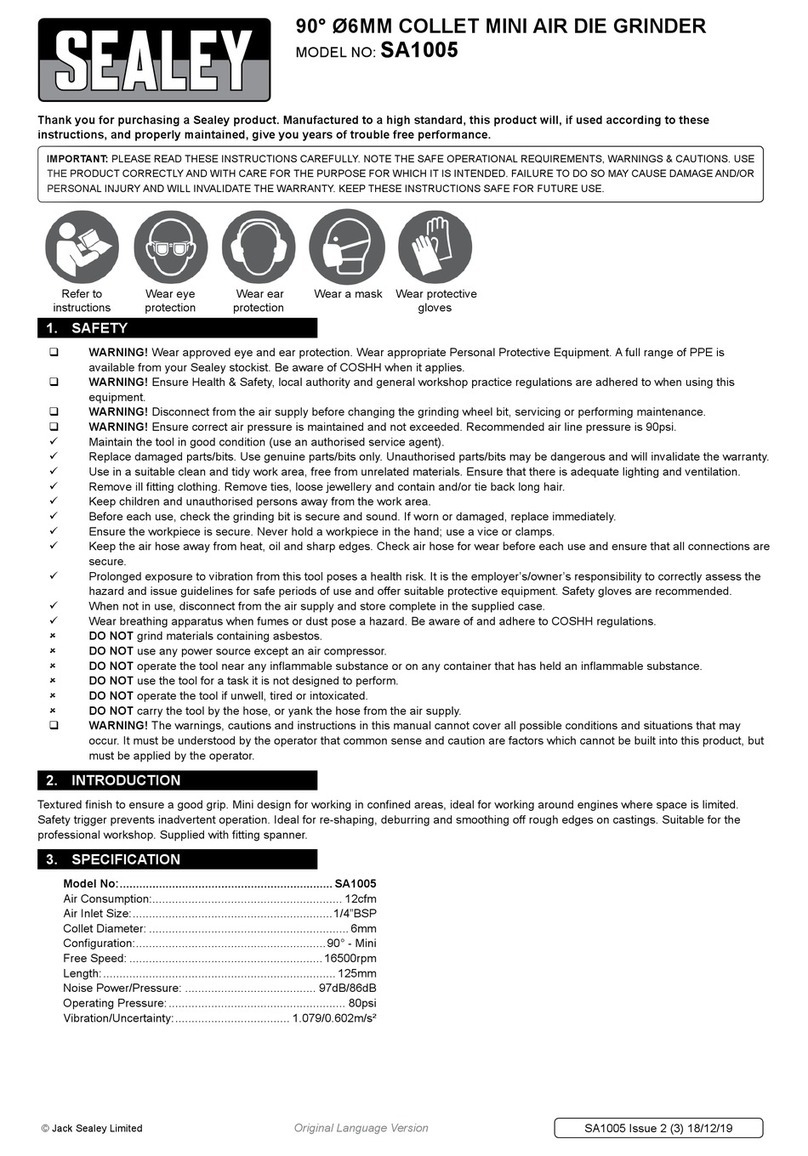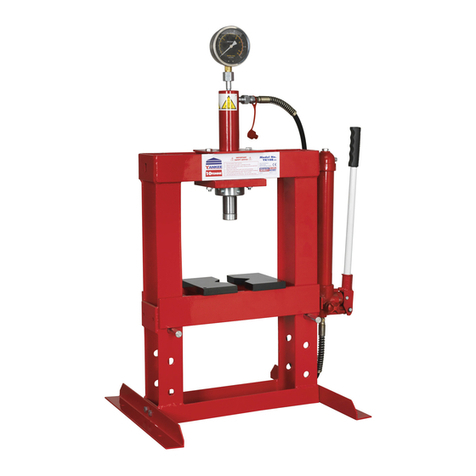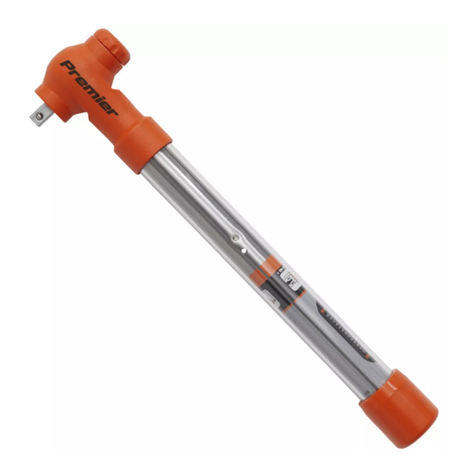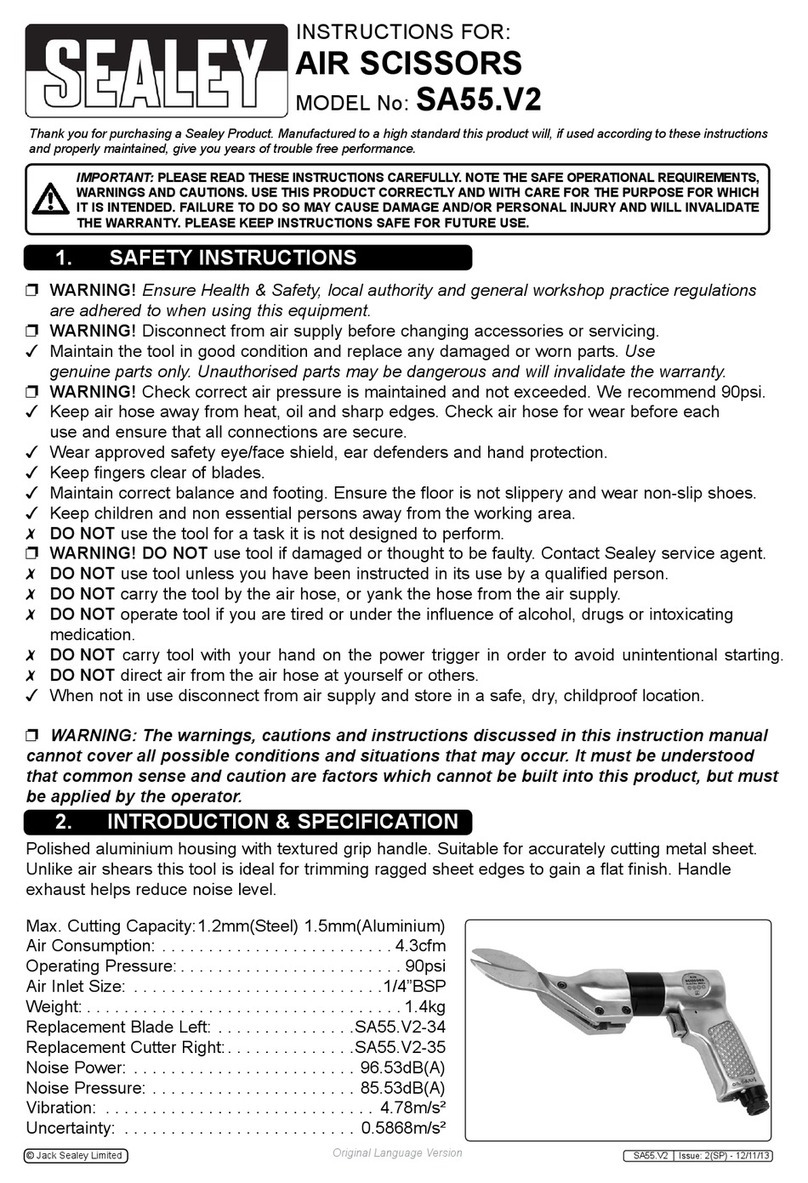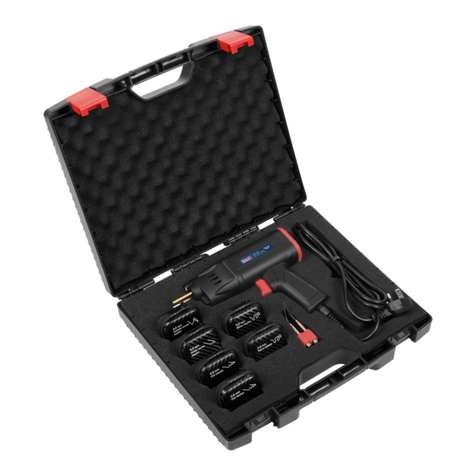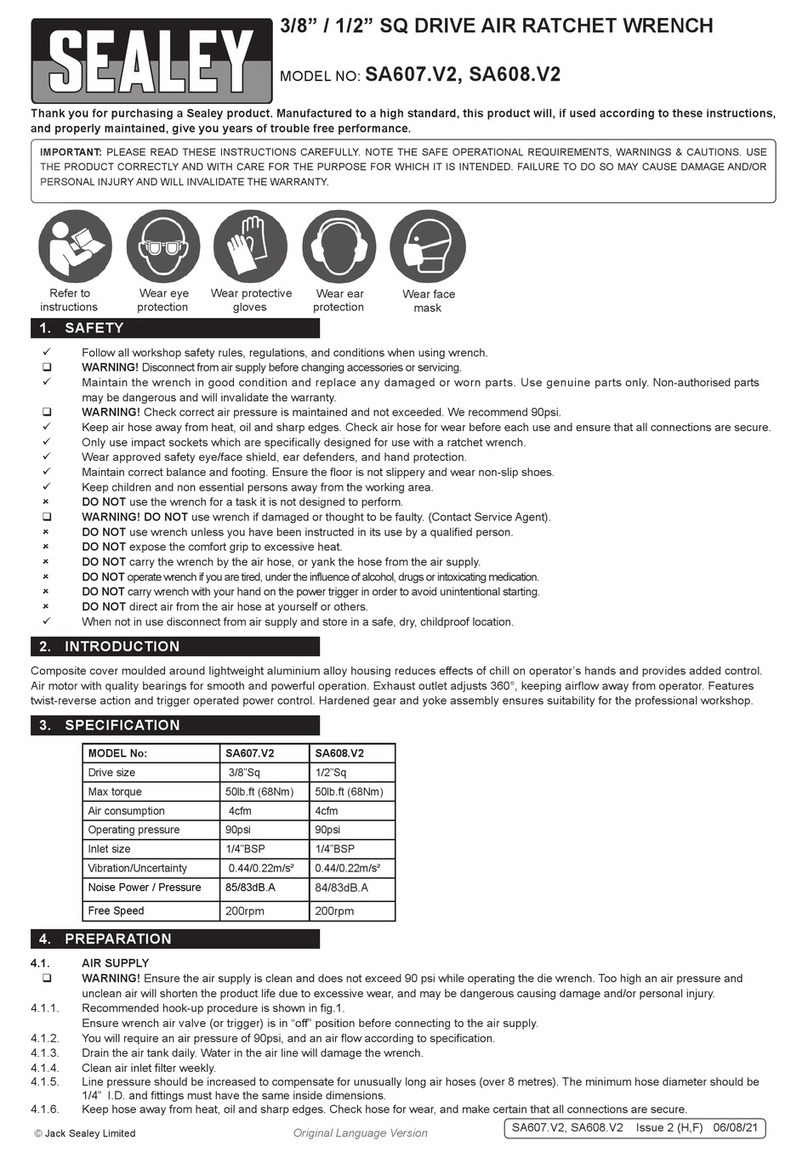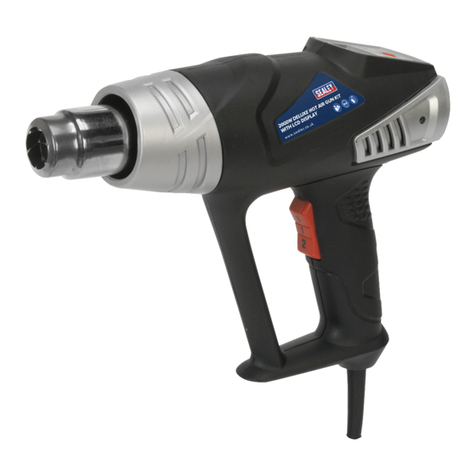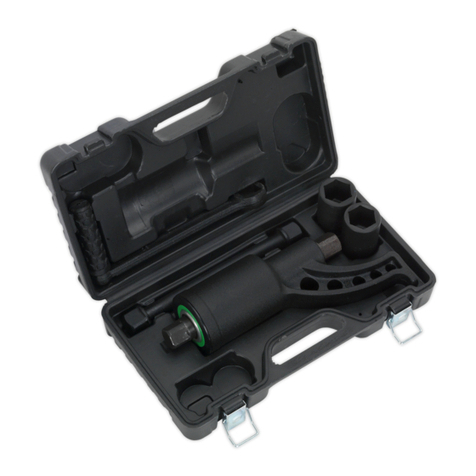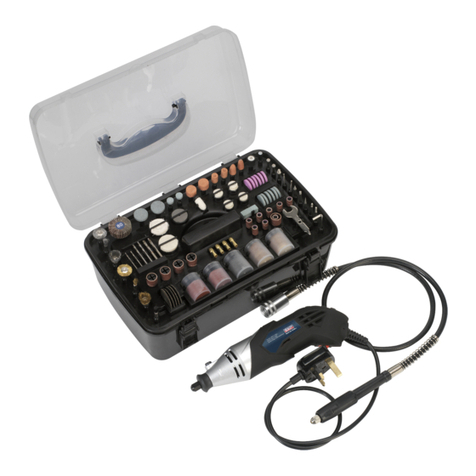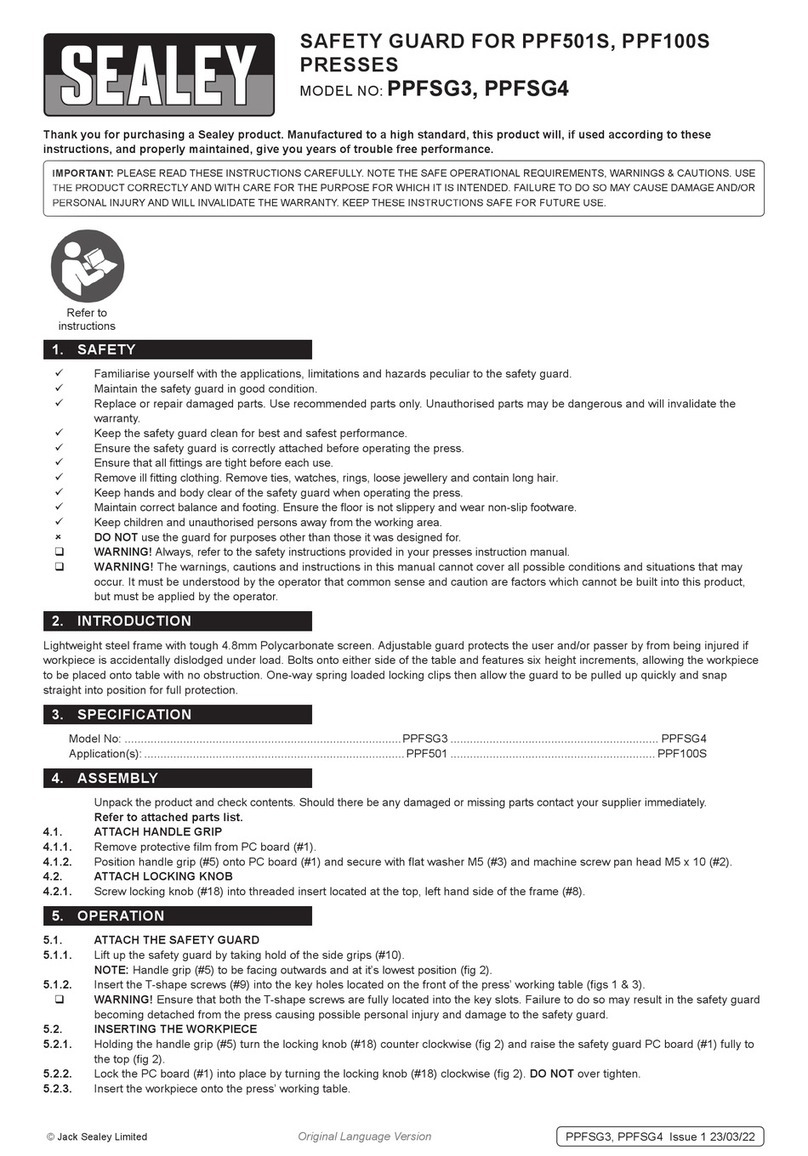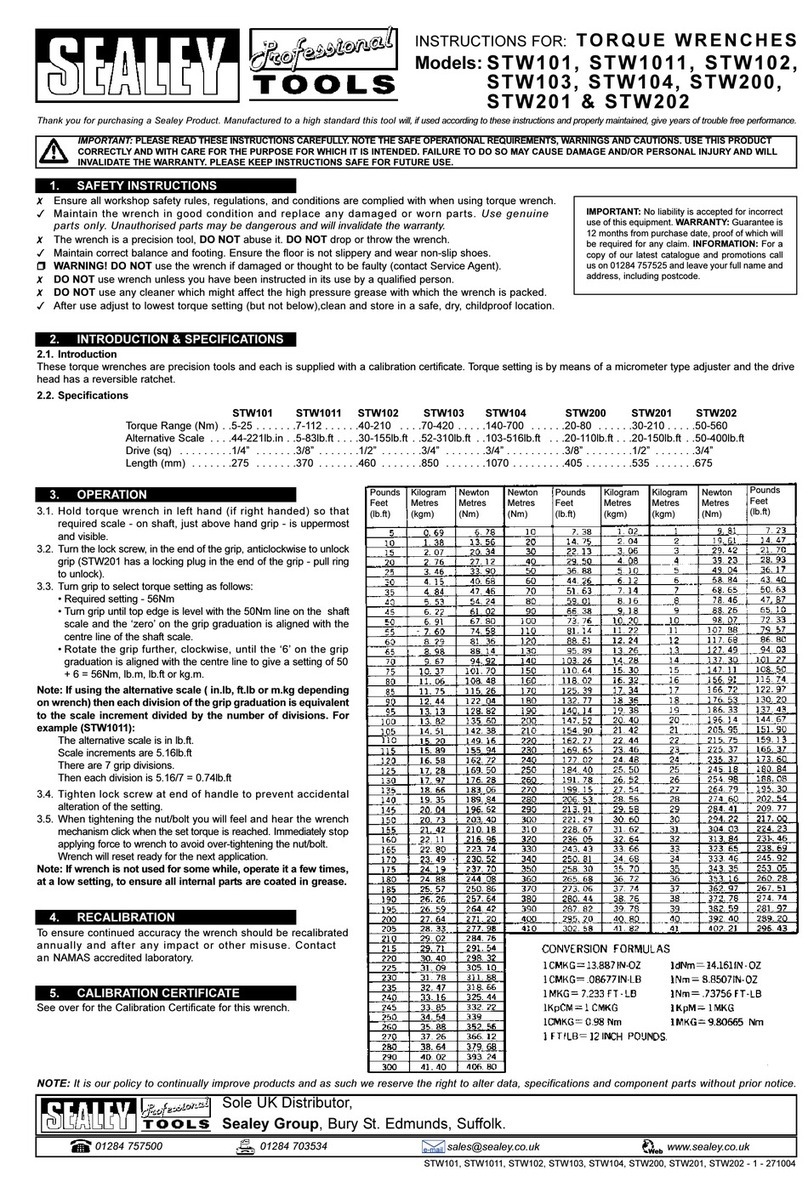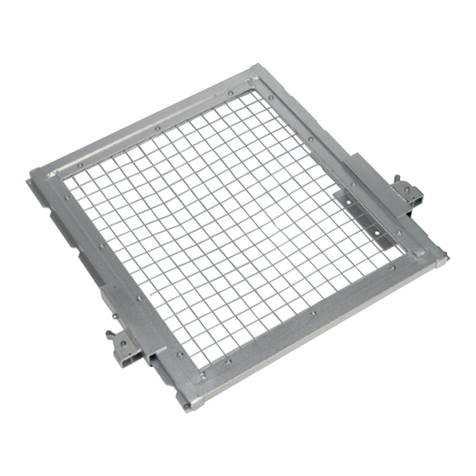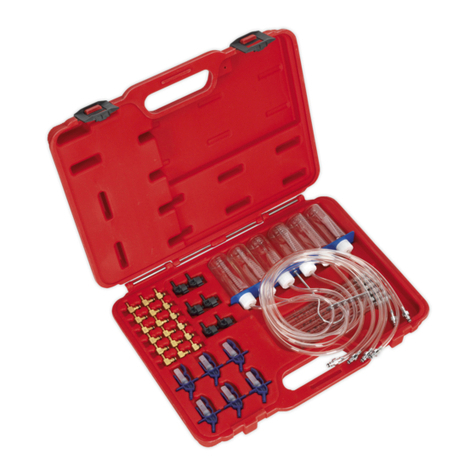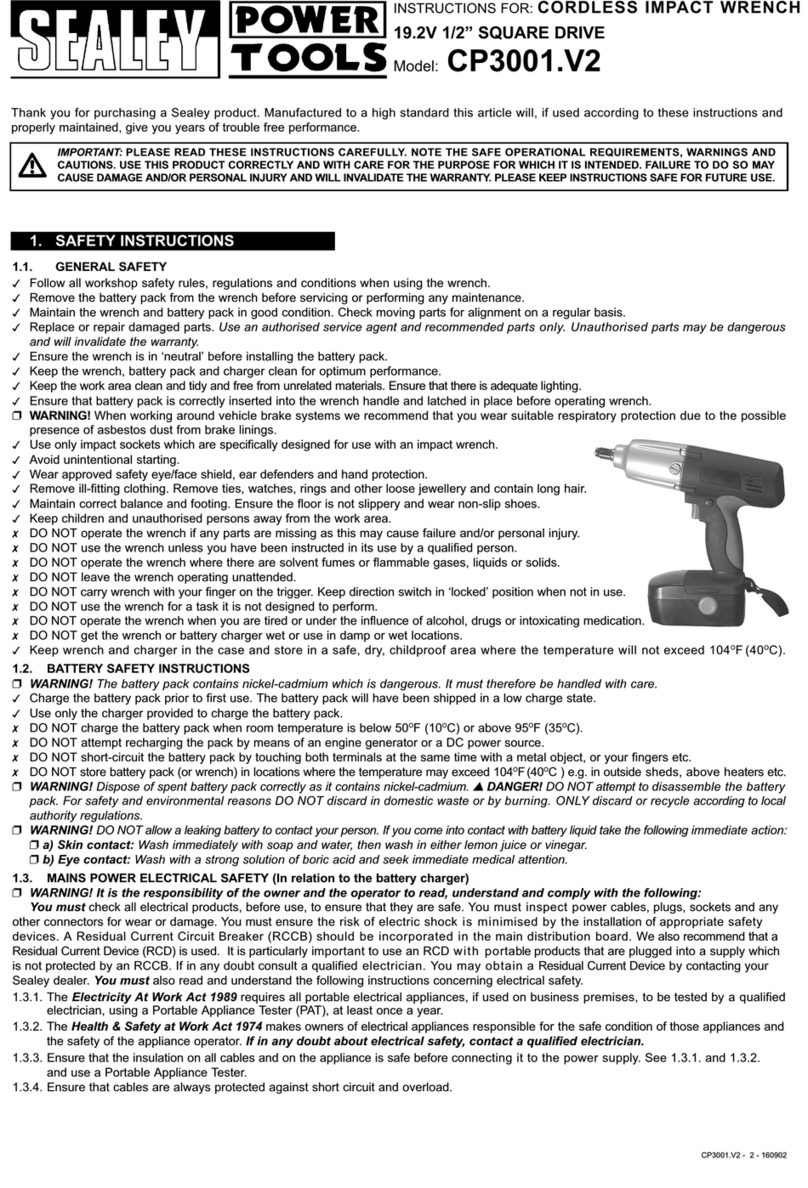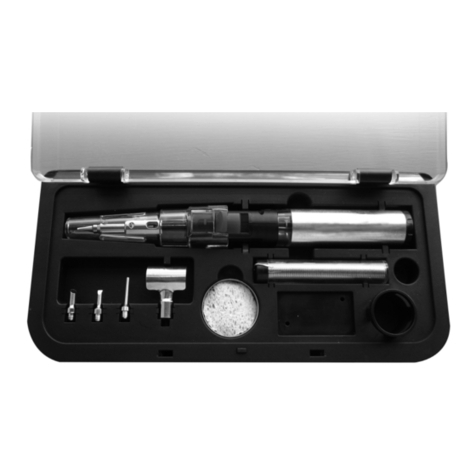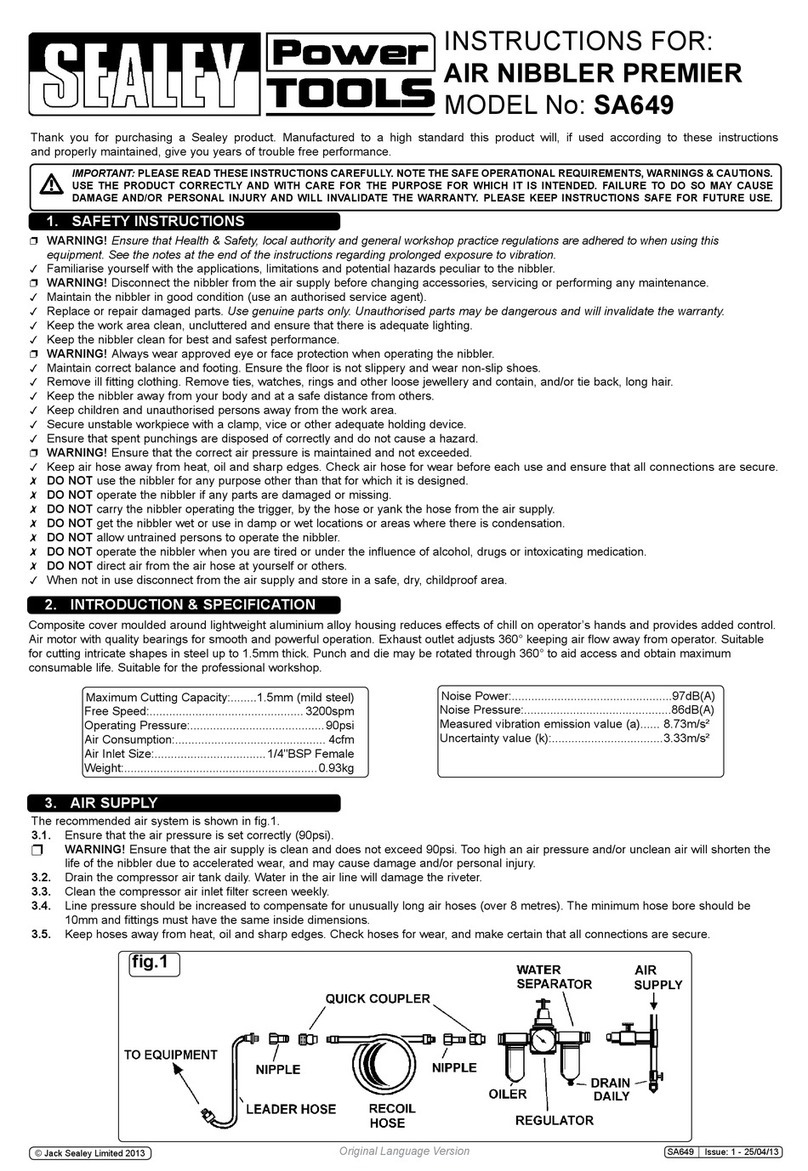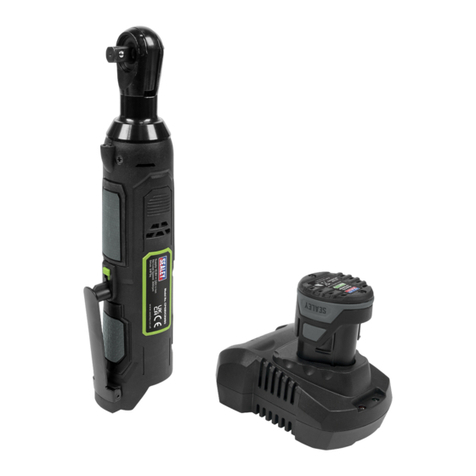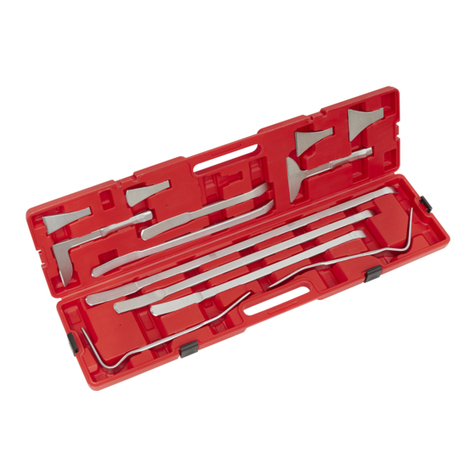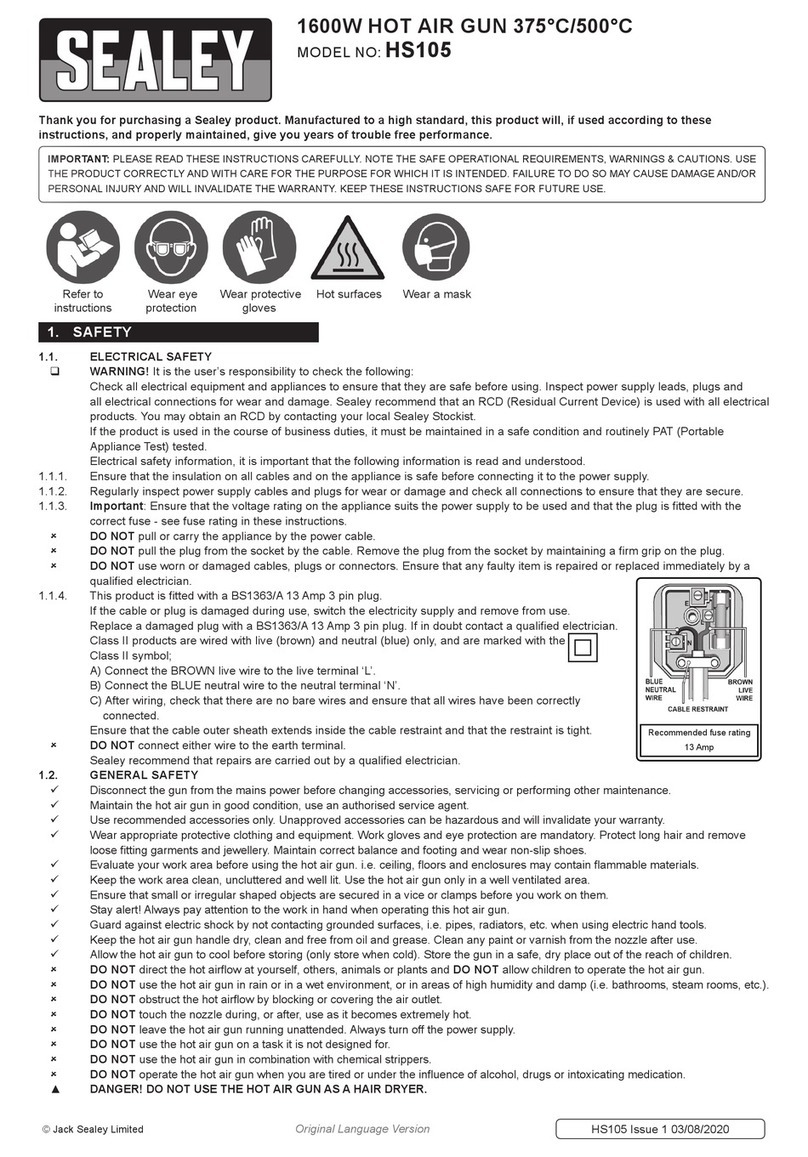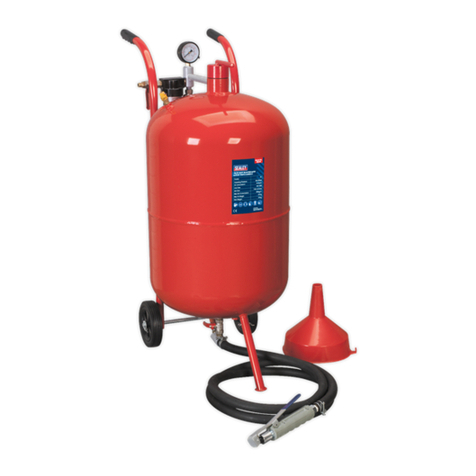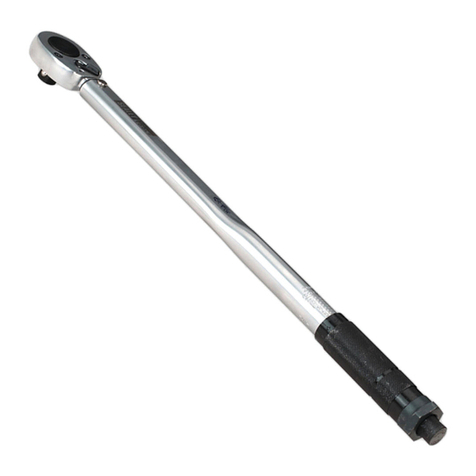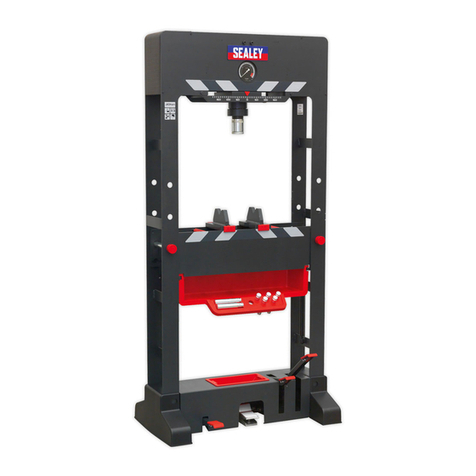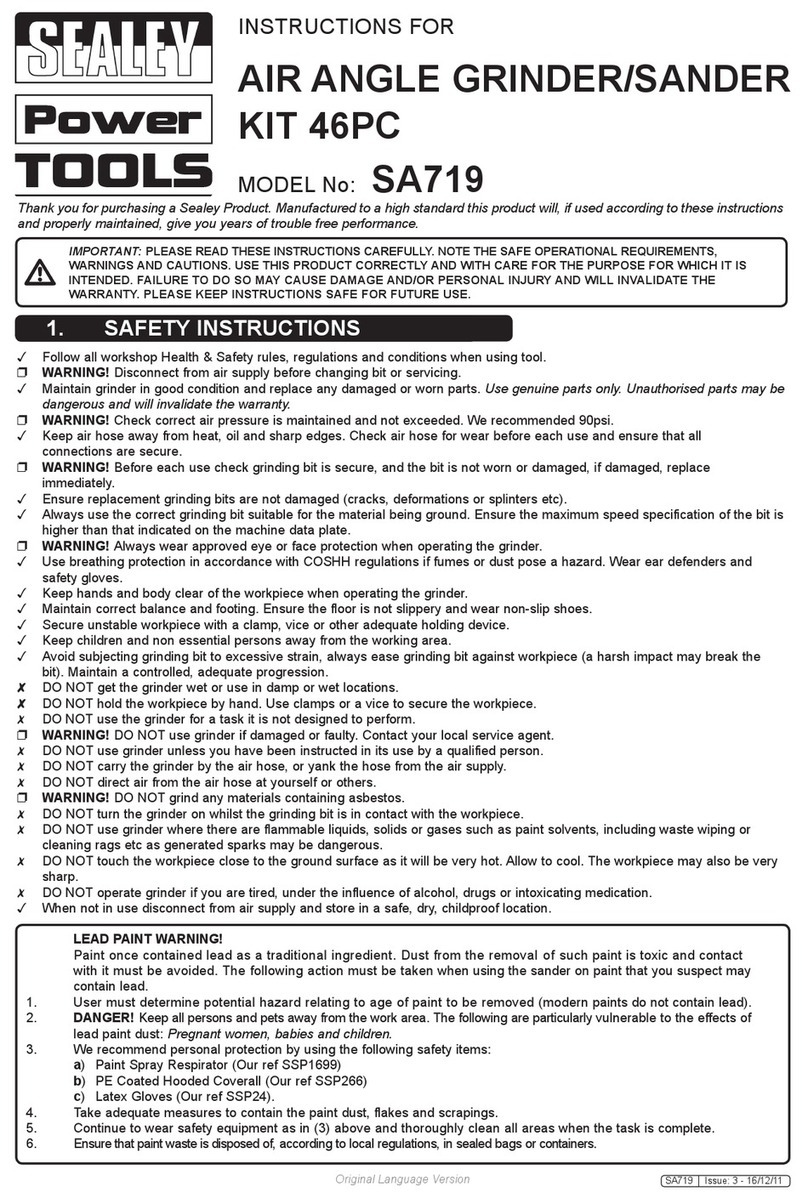
4. OPERATION
4.1. USING THE WRENCH
4.1.1. Fit a suitable socket to the wrench by snapping it onto the square drive.
4.1.2. Fit the battery pack to the wrench by aligning the tongue on the battery with the groove in the housing and slide into place. Ensure
thatthebatterypackisrmlylocated,Aclickwillbeheardwhenithaslockedintoposition.
4.1.3. BATTERY CHARGE INDICATOR LEDs
4.1.4. Oncethebatteryhasbeenttedagentlepushonthetriggerwillilluminatethebatterychargeindicators.Theywillturno
after a few seconds if the tool is not being used.
4.1.5. Selecttherequireddirectionofrotation.Tochange direction, turn the direction selector on the rear of the drive head, to the left orchange direction, turn the direction selector on the rear of the drive head, to the left or
right.right. DO NOTDO NOT attempt to change the direction of rotation whilst trigger is depressed.attempt to change the direction of rotation whilst trigger is depressed.
4.1.6.4.1.6. Speedcanbecontrolledbyvaryingthengerpressureonthetrigger.Initialpressurewillswitchontheworklight.
4.1.7. Thetriggercanbelockedintheopositionwhenrequiredtopreventaccidentaluse.
4.1.8. Whentightening,takecarenottoover-torquesmallxiWhentightening,takecarenottoover-torquesmallxings.
Note: Oncriticalfixingsalwayscheckthetorquewithatorquewrenchaccordingtotheproductorvehiclemanufacturer’s
guidelines.
WARNING! – Risk of Hand Arm Vibration Injury.
This tool may cause Hand Arm Vibration Syndrome if its use is not managed adequately.
ThistoolissubjecttothevibrationtestingsectionoftheMachineryDirective2006/42/EC.
This tool is to be operated in accordance with these instructions.
Measuredvibrationemissionvalue(a)...........................7.373.m/s²
Uncertaintyvalue(k):......................................................1.5m/s²
Pleasenotethattheapplicationofthetooltoasolespecialisttaskmayproduceadierentaveragevibrationemission.Werecommendthata
specicevaluationofthevibrationemissionisconductedpriortocommencingwithaspecialisttask.
Ahealthandsafetyassessmentbytheuser(oremployer)willneedtobecarriedouttodeterminethesuitabledurationofuseforeachtool.
NB: Stated Vibration Emission values are type-test values and are intended to be typical.
Whilst in use, the actual value will vary considerably from and depend on many factors.
Such factors include; the operator, the task and the inserted tool or consumable.
NB:ensurethatthelengthofleaderhosesissucienttoallowunrestricteduse,asthisalsohelpstoreducevibration.
The state of maintenance of the tool itself is also an important factor, a poorly maintained tool will also increase the risk of Hand Arm Vibration
Syndrome.
Health surveillance.
Werecommendaprogrammeofhealthsurveillancetodetectearlysymptomsofvibrationinjurysothatmanagementprocedurescanbe
modiedaccordingly.
Personal protective equipment.
Wearenotawareofanypersonalprotectiveequipment(PPE)thatprovidesprotectionagainstvibrationinjurythatmayresultfromthe
uncontrolleduseofthistool.Werecommendasucientsupplyofclothing(includinggloves)toenabletheoperatortoremainwarmanddry
andmaintaingoodbloodcirculationinngersetc.Pleasenotethatthemosteectiveprotectionisprevention,pleaserefertothe
Correct Use and Maintenance section in these instructions. Guidance relating to the management of hand arm vibration can be found on the
HSC website www.hse.gov.uk - Hand-Arm Vibration at Work.
g.1
Original Language Version
© Jack Sealey Limited CP1209Issue130/04/20
Sealey Group, Kempson Way, Suffolk Business Park, Bury St Edmunds, Suffolk. IP32 7AR
01284 757500 01284 703534 sales@sealey.co.uk www.sealey.co.uk
Note: It is our policy to continually improve products and as such we reserve the right to alter data, specifications and component parts without prior
notice.
Important: No Liability is accepted for incorrect use of this product.
Warranty:Guaranteeis36monthsfrompurchasedate,proofofwhichisrequiredforanyclaim.
ENVIRONMENT PROTECTION
Recycle unwanted materials instead of disposing of them as waste. All tools, accessories and packaging should be sorted, taken to
a recycling centre and disposed of in a manner which is compatible with the environment. When the product becomes completely
unserviceableandrequiresdisposal,drainanyfluids(ifapplicable)intoapprovedcontainersanddisposeoftheproductandfluids
according to local regulations.
WEEE REGULATIONS
Dispose of this product at the end of its working life in compliance with the EU Directive on Waste Electrical and Electronic Equipment
(WEEE).Whentheproductisnolongerrequired,itmustbedisposedofinanenvironmentallyprotectiveway.Contactyourlocalsolid
waste authority for recycling information.
